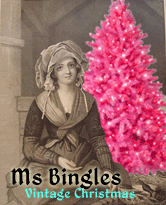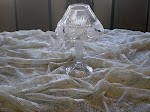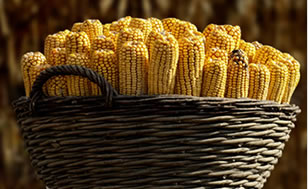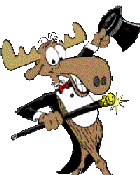USS Shenandoah (ZR-1)
ZR-1 at the mooring mast.USS Shenandoah was the first of four United States Navy rigid airships. She was built from 1922 to 1923 at Lakehurst Naval Air Station, and first flew in 1923. She developed the Navy's experience with rigid airships, even making the first crossing of the North American continent by airship. She was destroyed in a crash in 1925.
Design and Construction
The Shenandoah was originally designated FA-1, for 'Fleet Airship Number One' but this was changed to ZR-1. The airship was 680 feet long and weighed 36 tons. She had a range of 5,000 miles, and could reach speeds of 70 miles per hour. The Shenandoah was assembled at Lakehurst Naval Air Station between 1922 and 1923, in the only hangar large enough for the ship to fit, Hangar Number One, built in 1921. (Her parts were fabricated beforehand at the Naval Aircraft Factory in Philadelphia.) Lakehurst Naval Air Station had already served as a base for Navy blimps for some time, but the Shenandoah was the first rigid airship to join the Navy's fleet.
Construction of USS Shenandoah in 1923, showing the framework of a rigid airship.The design was initially based on the L-49 (LZ-96) Zeppelin bomber, which was downed during World War I in the American sector of France. The L-49 was a lightened "height climber", designed for altitude at the expense of other qualities. The design was found insufficient and a number of the features of newer Zeppelins were incorporated into the design, as well as some structural improvements. The structure was built from a new alloy of aluminum and copper known as duralumin. Whether the changes introduced into the original design of L-49 played a part in its later breaking up is a matter of debate.

The Shenandoah had a significant edge in safety over airships that came before it in that it was the first rigid airship to use helium rather than hydrogen. A similar precaution might have prevented the Hindenburg disaster twelve years later, had American authorities been willing to export the national resource to the Zeppelin company. Helium supplies were relatively rare at the time, and the Shenandoah used much of the world's reserves just to fill its enormous volume. The USS Los Angeles (ZR-3), the next rigid airship to enter Navy service, was at first filled with the helium from the Shenandoah until more could be procured.
The first frame of the Shenandoah was erected by 24 June 1922; and, on 20 August 1923, the completed airship was floated free of the ground.
Flight test run, steep angle docking at St. Louis on October 2, 1923.
After docking at St. Louis, Cmdr McCrary stepped out to meet Adm Moffet and Mayor Kiel; shown still inside the Control Car are Anton Heinen (German test pilot and consultant in the construction of the ZR1) and Cmdr Ralph D. Weyerbacher (design/build).
She was christened on 10 October 1923; sponsored by Mrs. Edwin Denby, wife of the Secretary of the Navy; and commissioned on the same day, Commander Frank R. McCrary in command.
Early Naval Service
USS Shenandoah took to the sky for the first time on September 4, 1923.
USS Shenandoah.Shenandoah was designed for fleet reconnaissance work of the type carried out by German naval airships in World War I. Her precommissioning trials included long range flights during September and early October 1923, to test her airworthiness in rain, fog, and poor visibility. On 27 October, Shenandoah celebrated Navy Day with a flight down the Shenandoah Valley and returned to Lakehurst that night by way of Washington and Baltimore, where crowds gathered to see the new airship in the beams of searchlights.
ZR-1's bow following the January storm.At this time, Rear Admiral William Moffett, Chief of the Bureau of Aeronautics and staunch advocate of the airship, was discussing the possibility of using Shenandoah to explore the Arctic. Such a program, he felt, would produce valuable weather data as well as experience in cold-weather operations. With her endurance and ability to fly at low speeds, the airship was thought to be well suited to such work. President Calvin Coolidge approved Moffett's proposal, but on 16 January 1924, Shenandoah was torn from her Lakehurst mooring mast by a gale, and her nose was damaged. She rode out the storm and landed safely, but a period of repair was needed, and the Arctic expedition was dropped.

Shenandoah's repairs were completed in May, and she devoted the summer of 1924 to work with her powerplant and radio equipment to prepare for her duty with the fleet. On 1 August, she reported for duty with the Scouting Fleet and took part in tactical exercises. Shenandoah succeeded in discovering the “enemy” force as planned but lost contact with it in foul weather. Technical difficulties and lack of support facilities in the fleet forced her to depart the operating area ahead of time to return to Lakehurst. Although this marred the exercises as far as airship reconnaissance went, it emphasized the need for advanced bases and maintenance ships if lighter-than-air craft were to take any part in operations of this kind.
Flight across North America
The USS Shenandoah moored to the USS Patoka.In July of 1924 the oiler Patoka (AO-9) put in to Norfolk Navy Yard for extensive modifications to become the Navy's first Airship Tender. An experimental mooring mast some 125 feet above the water was constructed; additional accommodations both for the crew of Shenandoah and for the men who would handle and supply the airship were added; facilities for the helium, gasoline, and other supplies necessary for Shenandoah were built; as well as handling and stowage facilities for three seaplanes. Shenandoah engaged in a short series of mooring experiments with Patoka to determine the practicality of mobile fleet support of scouting airships. The first successful mooring was made 8 August 1924. During October of 1924, Shenandoah flew from Lakehurst to California and on to Washington to test newly erected mooring masts. This was the first flight of a rigid airship across North America.
Later Naval careerThe year 1925 began with nearly six months of maintenance and ground test work. Shenandoah did not take to the air until 26 June, when she began preparations for summer operations with the fleet. During July and August, she again operated with the Scouting Fleet, successfully performing scouting problems and being towed by Patoka while moored to that ship's mast.
Wreck of the Shenandoah
Fabric from the airship USS Shenandoah, recovered from the crash site.
On 2 September 1925, Shenandoah departed Lakehurst on a promotional flight to the Midwest which would include flyovers of 40 cities and visits to state fairs. Testing of a new mooring mast at Dearborn, Michigan was included in the schedule. While passing through an area of thunderstorms and turbulence over Ohio early in the morning of the 3rd, the airship was torn apart and crashed in several pieces near Caldwell, Ohio. Shenandoah's commanding officer, Commander Zachary Lansdowne, and 13 other officers and men were killed. Those killed were:
LCDR Zachary Lansdowne, Commanding Officer, Greenville, Ohio
LCDR Lewis Hancock Jr., Executive Officer, Austin, Texas,
LT. Arthur Reginald Houghton, Watch Officer, Alston, Mass.
LT. JG Edgar William Sheppard, Engineering Officer, Washington D. C.
LT. John (Jack) Bullard Lawrence, Watch Officer, St. Paul, Minn.
CPO George Conrad Schnitzer, Radio Officer, Tuckertown, N. J
AMM1C James Albert Moore, Radio Generator, Savannah, Ga
AR1C Ralph Thomas Joffray, Rigger, St. Louis, Mo.
AMM1C Bartholomew (Bart) B. O'Sullivan, Lowell, Mass
CPO James William Cullinan, Binghampton, N. Y
CPO Everett Price Allen, Chief Rigger, St. Louis, Mo.
AMM Charles Harrison Broom, Tom’s River, N. J.
AMM Celestino P. Mazzuco, Murray Hill NJ
AMM William Howard Spratley, Venice, Ill.
Twenty-nine survivors succeeded in riding three sections of the airship to earth. The survivors were:
Louis E. Allely
LT. Joseph B. Anderson
G. W. Armour
LT. Charles E. Bauch
CBM Henry L.Boswell
CBM Arthur E. Carlson
Warrant Officer Chief Gunner CWO Raymond Cole
Lester Coleman
James E."Red" Collier
Mark Donovan
John J. Hahn
Col. Chalmers G. Hall
Chief Machinist CWO, Shine S. Halliburton
Thomas Hendley
Benjamin O. Hereth
Walter Johnson
Aviation Machinist's Mate Ralph Jones
MM2C Julius E. Malak
CPO Franklin E. Masters
ACR, Chief Rigger John.F. McCarthy
LT. Roland Mayer
ACR Frank L. Peckham
ACMM August C.Quernheim
LT. Walter T. Richardson (Naval Reserve, traveling as a civilian observer)
LCMDR Charles Emery Rosendahl
ACMM William A. Russell
AMM1c Joseph Shevlowitz
Charles Solar
CBM Frederick J. "Bull" Tobin
The fatal flight had been made under protest by Cmdr. Lansdowne (a native of Greenville, Ohio), who warned of the violent weather conditions which were prevalent in the area and common to Ohio in late summer. His pleas for a cancellation of the flight only led to a postponement. His superiors were keen to publicize airship technology, and justify the huge cost of the airship to the taxpayers, so publicity, rather than prudence won the day. This event was the trigger for Army Colonel Billy Mitchell to heavily criticize the leadership of both the Army and the Navy, leading directly to his court-martial for insubordination and the end of his military career.
The survival of the 29 survivors has been attributed to the fact that the airship contained helium, which does not react chemically with air. If hydrogen had been used, the ship probably would have burned - as the LZ 129 Hindenburg would twelve years later.
Shenandoah Elementary School and Shenandoah High School in Noble County, Ohio, where the crash occurred, is named in honor of the ship and crew. Its sports teams are nicknamed "The Zeps".
A truck stop, Shenandoah Plaza, located in Old Washington, Ohio was built in the early 1970's in memory of the airship.










































































